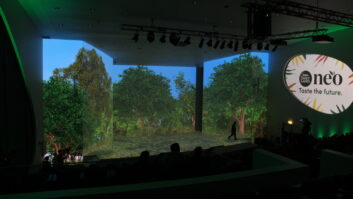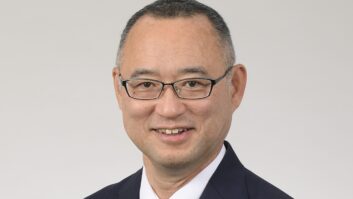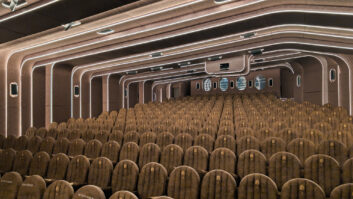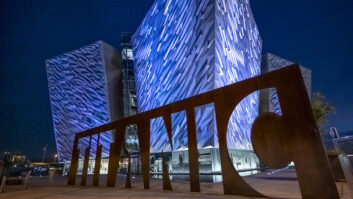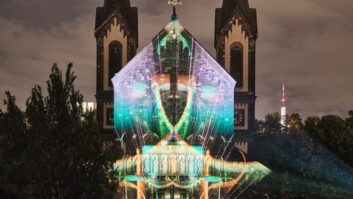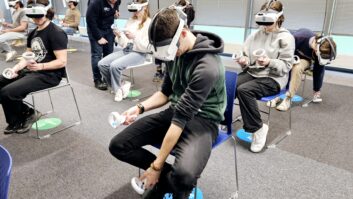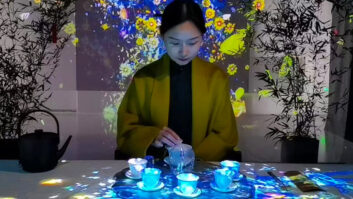A half-cylinder and floor projection in a room about five metres in diameter and 2.6 metres in height allows users to work interactively in a computer-simulated virtual environment. The deployment of rear projection allows both larger groups and small specialist teams to make the most of the facility without anyone getting in the path of the projection.
Mounted in four stereoscopic pairs, a total of eight Christie DS+300W projectors are used for the projection onto the cylinder. The floor area is fed by another four Christie DS+300W units. The 1-Chip DLP projectors are the predecessors of the new Christie DS+305 models and, says Christie, are well-suited to the 3D environment due to their 10-bit image processing, small footprint and light weight.
An ART tracking system with four infrared cameras enables the rendering PCs to compute the imaging information needed for output, enabling the provision of an optimum and undistorted 3D image to the viewer. Connected via a gigabit Ethernet system, the one master and six rendering PCs each feature Intel Core 2 Duo processors with a 2.67 GHz clock rate and 8GB of memory. The core configuration is completed by two NVIDIA graphics adapters with 768 MB memory each. Sound is delivered by a 7.1 surround sound system.
The installation – which took place over two weeks – was carried out by VISCON, whose team was headed up by project manager Michael Dierking.
“We consider the lab to be an integration platform,” said Professor Andreas Kolb, who is responsible for the Siegen 3D laboratory. “We wanted to be able to introduce topics to entire groups of spectators, but also to work on interactive projects with just two or three scientists. We do hope, of course, that because of its flexibility, the Siegen 3D lab will be utilised by industry clients, too. The first projects of this type have already been started, for example with engineering companies.”
IMAGE CREDIT: Professor Kolb, University of Siegen
